#arcane low quality icons
Text


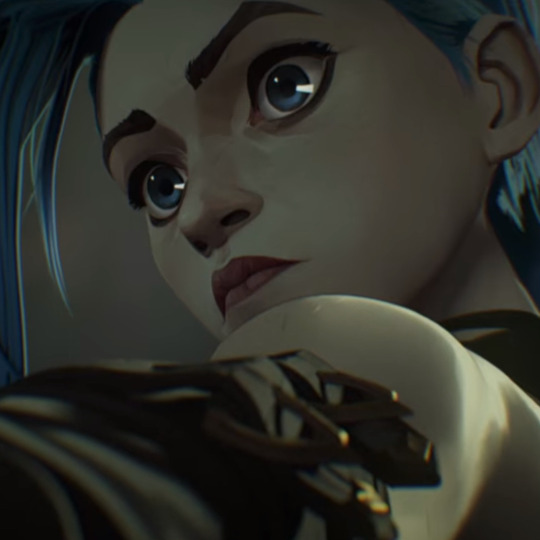






- ', arcane ┈ jinx icons ꒱
#jinx#jinx icons#jinx lq icons#jinx low quality icons#jinx arcane#jinx league of legends#powder#powder icons#powder lq icons#powder low quality icons#powder arcane#powder league of legends#arcane#arcane icons#arcane lq icons#arcane low quality icons#arcane pfp#league of legends
159 notes
·
View notes
Text
Welcome To Sharkie’s Blog!

Hi there! You can call me Sharkie or Shark!
I’m an agender lesbian and am taken by @mrs-silly! I go by he/they.
My lovely icon was made by @gh0styyicons, thank you so much friendo! <3
SEALIFE SYSTEM SIGNOFF EMOJIS(note: shark doest use signoff emojis becuz he’s the host and fronts the most)
Shark - 🦈✨🎧
Star - ⭐️🍭🎮
Arc - 🌀💥💫
Knight - ⚔️🛡️💜
V - 💜🧸🍿
X - 💥🍭⛓️
Tako - 🐙🖌️🩷
Gala - 💫⚔️💞
Morpho - 🦋🧡🗡️
Here’s my tag list so far, I’ll update as I add new tags!
Vent Tag: “shark’s blood”
Random Tag: “sharkie’s empty brain”
Favorite characters / f/o Tag: “sharkie’s f/o’s”
My absolute favorite things ever: “sharkie tbh creature”
Rambles/long text post Tag: “sharkie rambles”
Anything related to the Waddle Dees (from Kirby) Tag: “waddleposting”
”WHAT THE FUCK” Tag: “sharkie screams”
posts abt/asks from my friends <3 Tag: “sharkie’s friends <3”
Agere/Petre Tag: “shark pup”
System Tag: “sealife system”
Spongebob Tag: “spongeposts”
Witchcraft related Tag: “shark’s witchcraft”
Here are my interests!
Kirby (my favorite Kirby game is Star Allies)
Sharks (favorite types are nursing sharks, shortfin makos, and basking sharks)
Project Sekai (fav unit is WxS)
Vocaloid/Utau/Synth V/Fanloid (overall favorite is the vocaloid Otomachi Una)
Splatoon (fav idol is Marie and Frye)
Billie Bust Up (i think Fanto is very cool dude)
Murder Drones (my favorite characters are Uzi and Doll)
Nintendo’s Mii series (i’m a chronic Tomodachi Life player)
Cookie Run: Kingdom (my favorite cookie is Strawberry Crepe)
E-sekai/Idol EN (i am a devoted follower of rin penrose and yuko yurei)
Spongebob (i’ve loved the show all my life, and so far have only seen the game cosmic shake BUT i will be researching other games like bfbb)
TAWOG (i kin gumball orz)
HELLO YES I CRIED OVER NIMONA YOUR HONOR
Arcane (jinx is cool and relatable)
Crystals, tarot, witchcraft etc (been since i was like. really young)
It’s not very active BUT I do have a writing blog: @magolorstometrackers
I also have an art blog!: @shaaarkieee
I’m an age regressor and identify as alterhuman, I’m a Baku. I’m also (apparently) the host of a system.
I’m also autistic, and that probably has something to do with my involvement in the tword community.
I have a YouTube channel!! it’s @/shaaarkieee (My pfp is a low quality bandana dee who looks pissed off lmao)
Here are my top 5 favorite songs so as to show you my music taste!
Welcome To The Internet - Bo Burnham
I’ve Had Enough of You - Billie Bust Up
Cosmospice - PinocchioP
Vs Marx - Man On The Internet
Meta Knight Theme - Kirby Star Allies
That’s all I can really think of to add to this… uh…. my head is so empty right now help

#sharkie’s empty brain#yippee intro post redo becuz the old one is dusty musty crusty#id appreciate some reblogs on this just so ppl may recognize me and not be like who tf is that#i always feel like an asshole asking for reblogs sobs screams cries
5 notes
·
View notes
Text
Crit Role Miniature Rollout: C2E112
With Andrew Harshman
An archive and review of the minis used on CR.
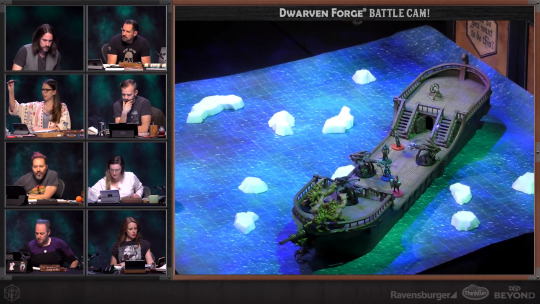
Maps and minis squeezed in at the last minute along with a wild returning villain revelation. Quite the final scene! A scene which was seemly determined by a random encounter table roll? My oh my, that’s quite the dangerous table.
Look at that beautiful blue water! And look at how quickly and easily that glorious mat material rolled out. Made by none other than Mats by Mars, a staple of Campaign 2. You too deserve a water mat of this caliber, head directly to matsbymars.com and use my code: DNDEED1220 for 10% off your entire order.
Shiver me timbers and what not, it’s time for Crit Role Miniature Rollout Campaign 2 Episode 112!
The List
Mats by Mars: Dark Caribbean Tabletop Wargaming Play Mat
Chest and Trove 5E Condition Rings
Icons of the Realms: The Falling Star Sailing Ship
Steamforged Games Critical Role Miniatures
Hero Forge Jester Duplicate
Maze of Death #029 Deep Lurker
War Drums #01 Arcane Ballista
Waterdeep Dragon Heist #011 Human Sun Soul Monk
Waterdeep Dungeon of the Mad Mage #013 Berserker
Waterdeep Dungeon of the Mad Mage #017 Berserker
Icewind Dale Rime of the Frostmaiden #038 Nass Lantomir
Steamforged Avantika
Craft Foam Ice
Returning Minis

Chuul Maze of Death #029 Deep Lurker
Mini photo sourced from miniaturemarket.com
Ballistas War Drums #01 Arcane Ballista
Mini photo sourced from minisgallery.com
Several returning minis this session. In addition to those pictured above, one of the crew persons is Waterdeep Dragon Heist #011 Human Sun Soul Monk (as seen in the C2E89 fight club). The Arcane Balistas were featured in the Happy Fun Ball during the C2E81 mage hunter golem chase. And Deep Lurker (chuul) miniatures were in an underwater C2E47 battle. It’s noteworthy that the Arcane Ballista is not a cheap miniature, at the time of posting fetching around 25 to 35 dollars USD on the mini secondary market. Top quality production value here folks!
The Terrain

Midnight Hammer Wizkids Icons of the Realms: The Falling Star Sailing Ship
Ice Craft Foam
Water Mats by Mars: Dark Caribbean Tabletop Wargaming Play Mat
I wanna say that Midnight Hammer is a good metal band name. But I’m not totally sold. Maybe it makes for a better jazz group name? Well regardless of whether this is a good name for a band, it certainly is a good ship. I’m not really into the paper/plastic material deck, nor am I fond of the fabric sails (not featured in the episode), also the interior could have more detail, also... Falling Star is a pretty dreadful ship title imo. On the whole however, this is a pretty impressive prepainted product. Having played with this model in a home game, I can speak to the mighty table presence this ship has.
The NPCs

Barbarian Crew Members Waterdeep Dungeon of the Mad Mage #013 Berserker and Waterdeep Dungeon of the Mad Mage #017 Berserker
Mini photos sourced from minisgallery.com
Alt miniatures done right. I really dig this pair of figures. A fun chargin’ pose coupled with passable paint. And what a great pick by Matt, these two with their furry navy uniforms look right at home on an artic sea vessel.

Cozy Crew Member Icewind Dale Rime of the Frostmaiden #038 Nass Lantomir
Mini photo sourced from minisgallery.com
Another bundled up miniature. It’s unclear how bad or not this figure is. The online photos of this mini range from decent to dreadful. The model appears to suffer the common Icons of the Realms miniatures problem of low detail fidelity. Basically, the model looks smoother than it should with the details obscured and ill defined. It’s too bad, this seems like a neat quirky character design.
The Villains

Captain Avantika Steamforged Avantika
Mini photo sourced from Steamforged Games’s Twitter.
Avantika’s back with her very own Steamforged sculpt! Can’t wait to get a closer look at this paint job next ep. Looks good from here though!
Closing Thoughts
This battle is gonna be buh-rutal. Batten down the hatches, the hype is real!
#criticalroleminiaturerollout
#critroleminiaturerollour#criticalroleminiaturerollout#critrole#criticalrole#crspoilers#cr#critical role#crit role#critical role campaign 2
14 notes
·
View notes
Text
So You Want to Play: IRON MAN
(Bringing the Armored Avenger to the Dungeons and Dragons table)

So you want to play Iron Man. The armored avenger has reached an all new height of popularity in the last few years, rocking comic books, animated features, and of course, the big screen. So why shouldn’t you bring him to your DnD table, and crush puny kobolds with the power of your crimson suit of power armor?
In this article I’ll walk you through a Pathfinder Iron Man character build, that is effective, powerful, and simple.

RULES OF THE GAME
So, since this is the first So You Want to Play, I feel I should explain how I made some of the choices that I did. Typically, when it comes to these kinds of builds I’m going to be looking for 3 factors (in rough order of importance): Similarity, Playability, and Continuity.
Similarity is the closeness of the build to the target character. What’s the point of an Iron Man build that’s nothing like Iron Man?
Playability is the effectiveness of the build, from a strategic point of view. It’s fun to be Iron Man, but its no fun if you have to suck ass to do it. Power’s not our end goal of course, but it’s fun to be awesome, and we want to stay at least on par with more vanilla fighters, paladins, and rogues of similar level.
Finally, Continuity is the reliability of the first two factors across all levels. This is something I feel often gets ignored in many of the builds that float around the internet. Many have really high Similarity and Playability at a certain level, but almost none before reaching that key point where they finish their feat chains, or get a class feature, or buy a magic item. It looks great on paper, but it’s a bit of a problem when it comes to actual usability. A lot of us may want to be Iron Man from level 1, and good Continuity should be just that: both playable and recognizable from level 1 to level 20.
OK, so now we’ve got that out of the way, let’s get started.
TECH vs. MAGIC
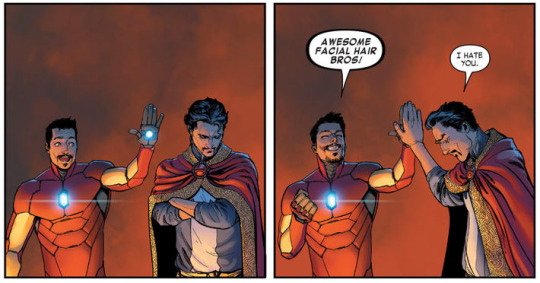
Ok, so let’s pull this band-aid off right away. Pretty much any Iron Man in a classic fantasy Dungeons and Dragons setting is going to have to be powered by magic. The Tony Stark we build will be a magical prodigy with a knack for arcane invention.
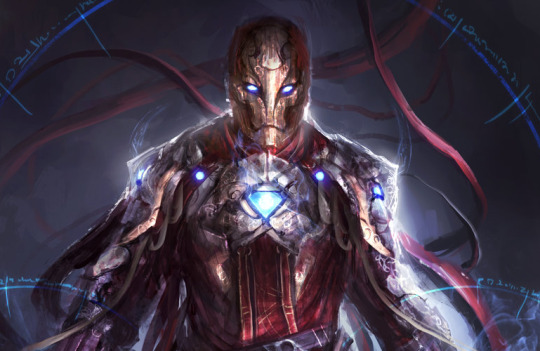
Now, if you’d rather go in a pure tech direction, without the magical element, Pathfinder does give you some options. If you check out their Iron Gods material and Numeria setting there’s a lot of really cool sci-fi stuff there. But in my opinion that stuff is really flavored better for the Guardians of the Galaxy then Iron Man. Sure you’ll get laser pistols and cybernetics at low-levels, but actual power armor is an artifact, unrealistic for any beginning adventurer to suit up in.
So, since most settings and Dungeon Masters will find it easier to fit a magic suit of armor into their campaign than a technological one, in this build we’ll be taking the magic route, but again- if you’re looking for tech, look up Iron Gods.
CLASS
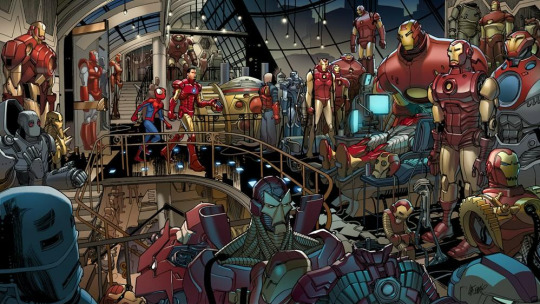
So, the most obvious question we face- what class is the best fit for the Armored Avenger? Obviously Tony’s going to need magic of some kind to power his suit. A Charisma based class wouldn’t be bad, but Intelligence would be even better. A wizard or arcanist would certainly have enough options to show off some very Iron Man-esque powers, but not until he reached the higher levels. An alchemist is a good fit for some of Tony’s weaponeer tendencies, but doesn’t really have any good options for the iconic power armor.
Somewhat surprisingly, what I consider the most Iron Man-ish class in Pathfinder is the Occult Adventures’ Occultist. Now the Occultist may not seem right for flavor on a first glance- since when does Tony operate in superstition and the powers of the past? But on closer inspection the Occultist has many other things right. The Occultist is primarily an item-user class, “a well-rounded character whose abilities revolve around a collection of unique items.” An Occultist is someone whose mental powers allows him to bring out the extraordinary in the common materials around him. With a little flavoring you could see him as a magical inventor, discovering powers in common objects that more traditional magicians would never dream of. Sounds a little-bit Starkish now, doesn’t it?
Its an Intelligence based class with a neat 3/4 base attack bonus, and with the Transmutation and Evocation school of implements you can rock the classic Iron Man repulsor beams and super-strength pretty much immediately, and fly as soon as level 7.
Taking the Battle Host archetype makes the fit even better. Besides giving Tony the full armor and weapon proficiency he deserves, it gives him the awesome ability of the Panoply Bond: a single bonded item through which the occultist channels of his powers. Sound familiar?

It’s power suit time, baby! Equally awesome is this little tidbit: “The bonded item is masterwork quality and the battle host begins play with it at no cost.”
Given that the bonded item can be any weapon, armor, or shield the possibility for abuse here seems large, and we might as well abuse away. Why not simulate the Stark fortune by starting your first level wearing a 1600gp suit of masterwork full plate? Pump 3 points of mental focus into Transmutation, and that full plate becomes a power suit, giving you a constant +2 to the physical ability score of your choice.
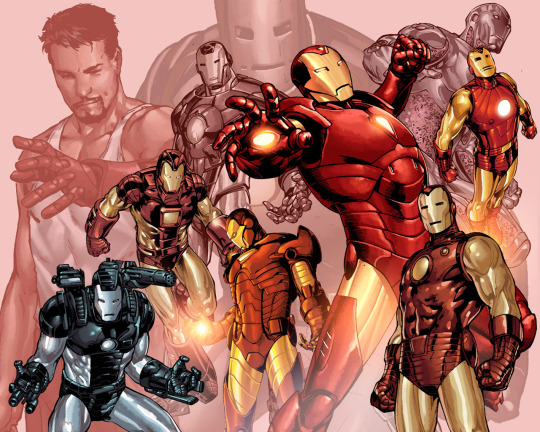
Going Battle Host gives up a little implement versatility as well as some of the more occult abilities that didn’t really fit Stark anyways, like magic circles and consorting with outsiders. In place you’ll get combat feats, which any good Iron Man will love, and the ability to push your super strength even further when you over-clock your suit with Heroic Splendor.
Tony in the comics often summons additional suits to his aid, and as a Battle Host you can do likewise with Spirit Warrior, summoning magical constructs of force to aid you in battle. The Battle Host also narrows down his item-based abilities to weapons and armor, which feels like a nice nod to the history of Stark Industries as a weapon manufacturer.
I feel I should mention: Another notable class is the Synthesist, an archetype of the Summoner which wears the Eidolon as a sort of suit. This was probably my second choice, as it has a fantastic armor feel, where the Eidolon “armor” has to be destroyed before you can be hurt. However, the whole evolution set up and the abilities it encourages honestly feels a little more Venom-y then Iron Man, what with the capacity to grow claws and additional limbs and all. Charisma-based casting isn’t quite a fit for a guy who invents powers with his intellect, and the conjuration-heavy spell list doesn’t feel very Iron Man-y either. No obvious access to wingless flight or practical repulsor beams are also a negative flavor-wise. Not to mention the archetype has been banned from official play due to OPness. That said, it’s a very cool class, and another great way to get yourself a magical suit of power armor.
Okay, so now that I’ve made my pitch for class let’s take a look at race!
RACE

So. Obviously Tony Stark is a human. Of course, we’re taking a fantasy route, so we shouldn’t really restrict ourselves, and I wouldn’t. Except that it’s really a part of Tony’s whole thing that he’s just human, not an Asgardian or a mutant, or an alien-enhanced super thinker.
If you’re open-minded to non-human races, Elf and Half-Elf make great choices, not just for their ability scores, but for their Favored Class bonus. Additional focus points is really, really awesome. Amusingly Halflings also get this bonus, and don’t make half-bad Occultists either.
But, since this is the guide to building the ideal Iron Man, not the Iron Elf, we will focus on things you can do as a human. Of course everyone loves the flexibility of the human ability scores, skills, and bonus feat, and Tony can use all 3. That being said, if you’re really into Tony being a skill master, (which honestly he is) consider taking the Focused Study alternative trait, which essentially gives Tony the Skill Focus feat 3 times, spread out across his level progression. Feel free to boost his Craft, Knowledge (Engineering), Spellcraft, Use Magic Device, or whatever skill you think is most magic-punk Tony Stark, out the window.
Being Human also provides access to a lot of other great feats for a super genius. Fast Learner, is a nice boost to hit points and skill points besides having the perfect flavor for a child prodigy. It also gives you access to the feat Improvisation which will give Stark all the know how he needs to really do anything. Neither is really necessary, but I personally like the flavor of an Iron Man who thinks (probably wrongly) that he can do everything.
ABILITY SCORES

So, everybody does ability scores differently, be it point buy, or roll 4d6 take the best 3, or roll 2d6+6. I’ll do this with a 20 point point-buy, and assume that will approximate most people’s builds, but will also give suggestions for scores that are lower or higher.
For a 20 point buy I like to go:
STR 14 (It’s nice to have at least this to mix it up in melee, soon your power suit will boost it even higher)
DEX 12 (A +1 ability score here will max out your full-plate dex bonus, raise your AC, and help you feel like a real armored tank. Not to mention you need this score to aim your repulsor beams.)
CON 12 (Even with armor Tony needs a little grit to take hits from the strongest beings in the multiverse. And also to keep his liver going)
INT 16 (Use your racial bonus to pump this to 18. That should be the minimum for any Stark!)
WIS 8 (This should be your dump stat. It’s not great from a competitive standpoint to handicap your Will and Perception, but it makes great flavor sense for Tony. The man is not exactly known for his good decision making.)
CHA 14 (What else for a smart-mouth, smooth-tallking, billionaire playboy? Also nice for Diplomacy, Bluff, Intimidate, and Use Magic Device).
If you have the points or rolls to pump INT even higher, it’s great for the flavor, and it doesn’t hurt your magic skills either. After that I’d prioritize Strength, then Constitution, and it’s certainly nice not to have to dump Wisdom.
If you need to back off on a few scores, this build doesn’t actually NEED Charisma, though I’d try to keep it above 10 for flavor. You can drop DEX and CON too, it’ll just make you a bit less tanky. If the flavor’s not too important to you, the build doesn’t actually NEED a final INT any higher than 16 post racial bonuses and that can be a real point saver if you don’t mind it.
FEATS
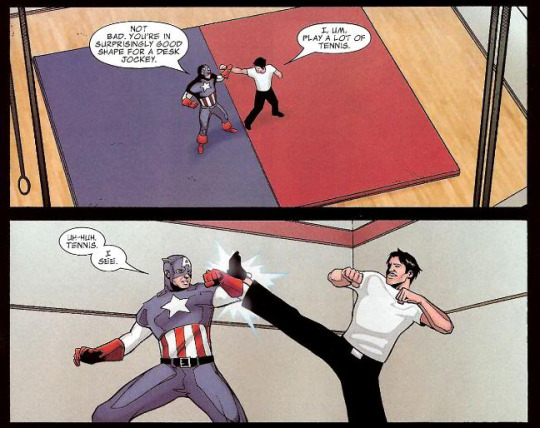
Feats really fall into two categories. Those that are good for Playability, and those that are good for Similarity. Best are the ones that do both- I’ve already listed a couple feats of note like Fast Learner and Improvisation.
One other is Armor Focus: (Full Plate) which both simulates the attention Tony puts into his suit, and will help make you into an armored behemoth. (Take it first level, alongside a heavy shield and wade into battle as a 1st level character with 23 Armor Class).
Extra Mental Focus and Extra Focus Power are basically must-haves for any Occultist, and are the Iron Man equivalent of increased power source and additional inventions respectively.
Toughness and Iron Will are a nice boost to your survivability if you can afford them.
Improved Initiative is a great feat for a quick thinking Avenger, and if you’re looking to spend combat feats Power Attack and Weapon focus never hurt to have.
For the purpose of flavor, I really like Antagonize and Dazzling Display. The use of Diplomacy and Intimidate in combat really works for the smart-mouth swaggering Tony Stark, and it gives you a chance to drop some smooth one-liners or other super hero banter. Psychological warfare is one of the most potent weapons of genius superheroes and villains, and it would be tragic if you couldn’t trade a barb or two of your own.

If you’re playing with traits, Additional Traits can be great, either for really refining a couple flavor points, getting in a couple necessary skills, or just for min-maxing like the munchkin Tony Stark probably is.
Now there are some mixed feelings on the magical Craft feats, but I personally like the utility they provide, and they’ve got to be a standard of any good inventing genius. Craft Magic Arms and Armor is a necessity for you, if you want your precious armor to stay relevant and cutting edge. Craft Wand is a great way to get some awesome first level spells like Lead Blades, Gravity Bow, Shield, Cure Light Wounds, and more. It can help make up for your limited spellcasting, and make sure the Armored Avenger is truly prepared for any situation. At later levels Craft Rod is the best way to get metamagic utility, and Craft Wondrous Item gives your genius tinkerer to the longest list of magical toys out there.
If you want more of a tinkerer feel, consider checking out the Item Mastery feats. I’m not going to list them here because, obviously getting even a few is VERY feat thirsty, but if you’re interested there’s nothing quite as Stark as jury rigging a Belt of Giant’s Strength to cast Fly on you.
Now, obviously, nobody’s going to be able to take all of these feats, at least not immediately, so you’ll need to make some tough decisions. It all depends on what you want, what your campaign needs, and what kind of Iron Man you want to be.
TRAITS

Not all campaigns use traits, and some of them use some of them to help tie characters in to a given campaign. Either way, they’re a fun way to help your character’s backstory fit more tightly with their mechanics.
Anyways, if you are playing with traits, and you have few to spare, consider the following options:
I love Bruising Intellect for flavor purposes, and its pretty much necessary if you want Intimidate, not to mention Antagonize and Dazzling Display. Spark of Creation is another pretty great one. Rich Parents, Reckless, Focused Mind, Fate’s Favored, and Alchemical Adept are also pretty good both for flavor and potency.
Fixer, Dangerously Curious, or Talented Blacksmith are all nice for flavor, but sort of weak mechanically.
Reactionary, Magical Lineage, Deft Dodger, and Auspicious Tattoo are all awesome traits for playability purposes, but don’t really fit the Iron Man mold.
If your campaign is using Drawbacks: Condescending, Headstrong, Hedonistic, and Vain should all seem familiar to Tony Stark.

SKILLS
Between your high INT, your human-ness, and your favored-class bonus odds are you’re netting 9 or 10 skill points a level.
For Tony Stark-ness I recommend:
Use Magic Device, Spellcraft, whatever Knowledge your party needs (arcana and engineering strike me as particularly Starkish), Craft (alchemy), Craft (armor), Disable Device, Diplomacy, Appraise, and Fly. Intimidate’s nice too if you got it on your skill list somehow.
Perception is also recommended, simply for being THE most used skill in the game. Tony’s a pretty perceptive guy too. Usually.
EQUIPMENT
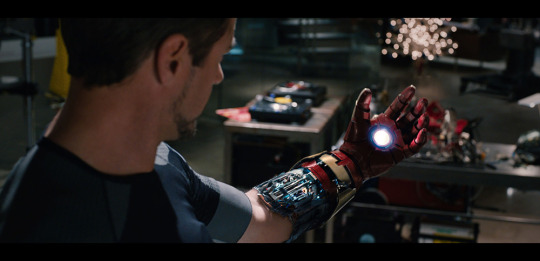
Armor is easy. Your panoply requires you take your armor with you all the way, and why would you want to take anything else? You’ll want Craft Magic Arms and Armor as soon as you can so you can enchant it. Then once you take the Aegis focus power you’ll be ready to have a truly adaptive set of armor. Under fire from negative energy? Turn on the Deathless enhancement. Something trying to trip, or eat you? Try Balanced or Bitter. Best of all, adapt your armor to your individual enemy with Defiant, the magic armor equivalent of Bane.
And speaking of bane...
Your weapon. Now I know Iron Man doesn’t use swords... but wouldn’t it be awesome if he did?

As the fantasy equivalent of Iron Man you have this excuse. Or you can try an axe or a hammer or whatever tickles your fancy. Go two-handed if you love damage, go sword and shield if you want to have the highest armor class in the world. I personally recommend two-handed, particularly at higher levels, where you can use a wand of shield to keep yourself shielded at all times anyways.
Be sure to get a magic weapon as soon as you can, even a dagger. Since as soon as you do, you can start using the Legacy Weapon focus power to start slapping Bane on your weapon when you need it. After all, what kind of super genius weaponeer doesn’t have the perfect weapon designed for any enemy he might face?
As for magic equipment, a Headband of Vast Intelligence is going to give you a real power boost. Consider it your magical Jarvis, connecting you to a magical computer system, telling you the wisest courses of action, and optimizing your power allocation.
A Belt of Giant’s Strength / Incredible Dexterity / Mighty Constitution is a good stand-in for continued improvements to the suit, supplementing the bonus from your transmutation resonant power.
Wands of Shield, Lead Blades, Endure Elements, Gravity Bow, and other such spells not only provide you with a nice boost to power and utility, but present ways for your Iron Man to add temporary innovations and enhancements to his armor and weapons.
A Wand of Cure Light Wounds will make you a passable post-battle medic, and can be a simple medical invention to accelerate biological processes.
A Handy Haversack gives you a neat way to store and retrieve items, not unlike the way Iron Man’s armor seems to feed him whatever he needs, stored in secret compartments about his armor.
Pages of Spell Knowledge will give you access to other spells you may need, while Runestones of Power can give you the precious slots needed to cast them.
IMPLEMENTS
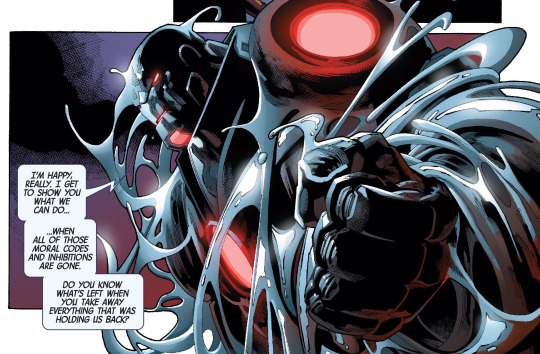
Ok, last but not least, we’ll be looking at Implements, the primary source of your suit’s powers. Generally you should think of your Focus Points as your power source, your Arc Reactor- and your Focus Powers as the things you can use that power for.
For the full Iron Man experience you have to take TRANSMUTATION. I suggest you take it at first level for the playability it will provide you with. The Resonant Power will boost your strength so long as you have sufficient focus points remaining, while Legacy Weapon will keep you fighting alongside full base attack bonus warriors, particularly once you can start dropping bane.
Quickness at level 5 will let your suit give you quick bursts of super speed, while Mind over Gravity at level 7 lets you engage thrusters, and take to the skies, with perfect mobility no less.
Or maybe use Size Alteration on yourself to just go full Hulkbuster.

The other MUST-HAVE for any proper Iron Man is EVOCATION. Frankly, from a sheer playability standpoint, this is one of the weaker implement schools, but it is awesome from a flavor point of view.

Use Energy Ray to fire your repulsor beams. Or if you’re ready to break out the heavy weapons, try breaking out Energy Blast or Wall of Power. Shape Mastery will let your targeting systems pick out your allies from your enemies.
After that, what Implement schools you take are just to customize what kind of Iron Man you want to be. Consider ABJURATION for shielding technology, or DIVINATION for surveillance. Consult ILLUSION if you want cloaking tech or CONJURATION if you’d rather dabble in AI, tinkering, and biology.
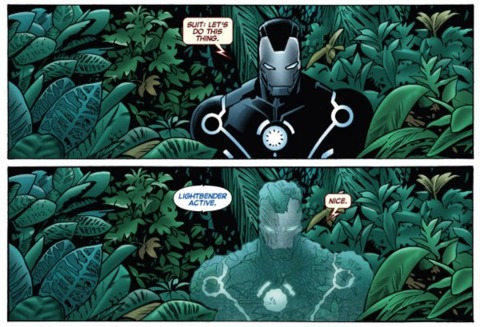
WRAPPING UP
And... It looks like our time is up! Well, it was fun while it lasted.
I hope this gives you some insight on how you can bring the Armored Avenger to your own campaigns, and helps you understand how you can be the best Iron Man you can be.
If you like the build or if you hate it, give me a shout. Got your own ideas? Tell me about them.
Most importantly of all: let me know if there’s anything else you’d like to see in these guides, and let me know what character you’d like to see me build next!
As always, everything is free use, I don’t own Dnd, Pathfinder, Iron Man, or any of the pictures I’ve used.
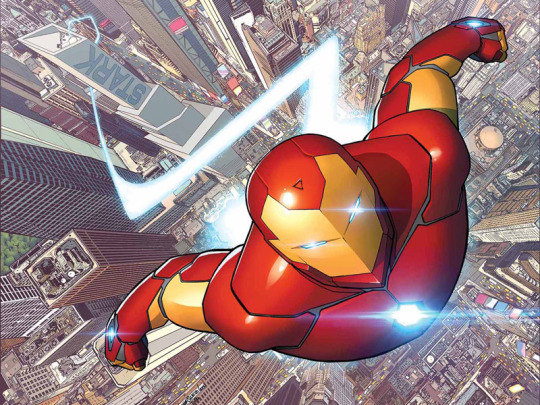
See you next time!
#iron man#tony stark#character#pathfinder#character build#So you want to play#pathfinder labs#So you want to play: Iron Man#Iron Man character build#dnd#dungeons and dragons#occultist
6 notes
·
View notes
Text
How to rev up your page speed for better website performance
Page speed is now a ranking factor on mobile search. That means it’s a critically important component in all of your search engine optimization (SEO) efforts because of its impact on user experience.
According to research conducted by Financial Times, a 1-second slower page results in a 5 percent reduction in reader engagement.
Google states over half of the visits made to mobile sites are abandoned if it takes more than 3 seconds for the screen to load.
The bottom line is simple: Page speed plays a significant role in performance, whether we’re talking about paid or organic search, reader engagement, sales or lead generation.
Fortunately, improving page speed isn’t some arcane and mysterious dark art. You won’t need to brew a special potion, summon demons, or sell your soul. You’ll just need to have a decent understanding of certain technologies and invest some good old-fashioned hard work to bring it all together.
Establish a baseline
The first step is to establish a baseline. By doing that, we can obtain a quantifiable measurement of speed and identify the work we’ll need to do to improve it. Some of the tools I use for this are:
WebPageTest.org.
GTmetrix.com.
Google PageSpeed Insights.
Google PageSpeed Insights
Once you have your tools lined up and a baseline, it’s time to get to work.
Understand how websites work
Most people — including many of those who claim to be developers — lack a proper understanding of how websites really work. That’s why we see so many bloated and inefficient websites today.
We’re at an interesting point in internet history where literally anyone can create a website with just a few clicks. While that comes with certain advantages, it also creates a whole world of new problems.
Think about it like this: If someone knew nothing about architecture, but used software that enabled them to create blueprints for a bridge with just a few clicks, would you feel comfortable driving across that bridge once it was built? I certainly wouldn’t.
That’s because there is a lot more to architecture than our own personal preferences. There are specific structures required to serve specific purposes. There are precise calculations to determine the load-bearing capacity of various components. And there are code and zoning laws to help ensure a building is safe and fits into the local community.
It’s the same thing with websites.
In order to ensure your website loads quickly, you need to understand hypertext markup language (HTML), cascading style sheets (CSS) and JavaScript at a bare minimum. Ideally, you should also have at least a working knowledge of hypertext preprocessor (PHP) and the inner workings of WordPress. Having a good handle on these elements will allow you to dig into the nuts and bolts of a website and fix the things that are slowing it down.
Minimize HTTP requests
Once upon a time, bandwidth was a minuscule fraction of what we enjoy today, so back then, we would compensate by slicing large images into a series of smaller images. Rather than waiting for a single large image to load, visitors would see the image load in chunks.
Today, the bandwidth available through even a basic internet connection is much better. This has led to lazy developers and impatient visitors.
Each hypertext transfer protocol (HTTP) request increases the time it takes for a page to load. Often significantly. In fact, the impact can be so dramatic that a smaller web page with more HTTP requests may actually take longer to fully load than a larger web page with fewer HTTP requests.
How do we reduce the number of HTTP requests our pages make? This is where we roll up our sleeves and start digging into the source code of our website. What we’re looking for here are opportunities to merge or eliminate certain HTTP requests.
CSS and JavaScript files are often the low-hanging fruit here because so many websites have a ton of both. There are three options to handle this:
Consolidate all CSS and JavaScript files into one single CSS file and JavaScript file.
Install a plug-in that mimics this functionality on the front end, while leaving the actual CSS and JavaScript files untouched on the back end.
When possible, delete calls to CSS and JavaScript files completely.
In most cases, you’ll need to use a combination of these options. That’s because if your website is built on WordPress, merging CSS and JavaScript files from plug-ins into a single file could cause problems when one or more of those plug-ins are updated.
Generally, I’ll first identify any CSS and JavaScript files that aren’t needed and remove them. The speed improvement you can make at this stage can be significant because many themes load a lot of unnecessary files. This might include fonts you aren’t using, separate CSS files for color variations and individual JavaScript files for functionality that you aren’t using, to name just a few.
Next, I ensure that all CSS and JavaScript files for that website are merged into a single CSS file and JavaScript file.
Finally, I’ll utilize a plug-in that merges all CSS and JavaScript files — for the theme as well the plug-ins — into a single file when the page is loaded, leaving the actual files untouched in the background.
I recommend using sprites to trim back HTTP requests generated by image files. This won’t work for every image, but it efficiently uses images that are used repeatedly throughout a website. This might include your logo, social media icons and navigational elements.
The idea here is that you put all of these images into a single file, and then use CSS to define the container for that element and appropriately position the image within that container. Now, instead of a dozen or more individual HTTP requests, you can simply make one. How’s that for efficient?
You may also want to consider replacing at least some of those images with a web font like FontAwesome.com, which gives you a lot more flexibility with the same or smaller file size.
If you go that route, you should download the necessary files and host them locally rather than remotely. Calls to external files can have a dramatic and detrimental effect on page speed. I’ve seen differences as large as one second or more when a website loads a file from an external source.
Go easy on the plug-ins
Plug-ins are some of the things that make WordPress awesome. They’re also some of the things that can make it terrible because they could be poorly programmed, resulting in poor performance. They also often load several CSS, JavaScript and image files, even those already loaded, such as JQuery.
This can get real messy real quick.
Each plug-in, no matter how lightweight, will place a load on your server when it serves a web page. Add up a few and the difference is noticeable, and that’s before we even talk about the CSS, JavaScript and image files it may need to load.
Here’s the problem: adding plug-ins often starts small but quickly evolves into an uncontrollable monster because web designers presenting themselves as web developers don’t know how to program the functionality they need. So they add one plug-in here and another there, and before you know it, there are dozens humming along behind the scenes.
I was involved in a project where an agency wanted to use their “developer,” who was really nothing more than a guy who installed plug-ins. To achieve the functionality the client wanted, the “developer” ended up installing 46 plug-ins! As you can imagine, the website slowed to a crawl, and since the “developer” didn’t know how to program and relied on the plug-ins, he hardcoded a warning within the admin area for the client not to update the plug-ins.
What a mess.
I recommend either investing the time to learn PHP and JavaScript or hiring a real developer who can build the functionality you need without a lot of bloated extras that will slow down a website.
Ditch the discount web hosting
We all want to save money, but your web hosting is not where you want to cut corners. It’s not a commodity. There’s a tremendous difference between that $10 a month hosting package from a bottom-end web host and a $30 a month hosting package from a higher-end web host like WP Engine.
Cheap web hosting is cheap for a reason.
Bargain hosting packages are not built for performance, they simply cram as many websites as they can onto each server and don’t optimize for speed. As a result, your website will load painfully slowly.
I’ve had this conversation with many clients, and often, their response is something to the effect of “Well, it loads quickly for me.”
Here’s the thing: it really doesn’t.
Most people have an unconscious bias toward their own website because they have an emotional attachment to it. They overlook its flaws because it’s theirs. Sort of like a parent who is not bothered by their children screaming at a restaurant while most of the other guests are.
But don’t take my word for it, there are several tools you can use to test the actual speed of a website.
A few years ago, I started making web hosting a top priority to help my clients achieve faster loading web pages. A friend recommended one of the specialized WordPress hosting companies, and I decided to give it a try.
I was floored in the very best way. Up until that point, I had always used bargain web hosting and tried to optimize for speed using caching plug-ins. But a WordPress hosting company operates specifically to serve WordPress at blazingly high speeds and is well worth the investment. I was seeing a 40 percent increase in speed even before caching and other fine tunings.
Invest in robust, high-quality web hosting and put in the same fine-tuning for speed that you ordinarily would. You’ll achieve a dramatic improvement over most, if not all of your competitors.
Leverage minification, caching and a CDN
Once you’ve gone through all my previous steps and have gotten to this point, you are ready to fine-tune. Your next steps can still create significant improvements, but you should expect a bit of trial and error as you move forward.
Minification. Minification is the process of stripping out unnecessary characters from CSS and JavaScript files. This includes white space, comments and trailing semicolons. The goal here is to make the files smaller.
This one might be tricky because it often breaks a website, so you’ll need to experiment to see how aggressive you can be and which files you can include.
You can manually process the files, but I prefer to use a plug-in that does this on the fly so that my files remain easily readable. It makes editing them a lot easier. Depending on your web host, this may already be built into their system.
Caching. Caching dramatically improves page speed because it saves dynamically generated HTML files and serves them from the cache (i.e., reusing previously generated data) each time a request is made, rather than running all of the PHP scripts from WordPress every time a page is loaded.
Caching, like minification, can be tricky because certain settings may break your website, so expect to face some trial and error here, too.
You have two options here:
If you’re still using bargain web hosting, you can use a plug-in like W3 Total Cache, WP-Rocket.me, or WP Super Cache.
If you’re using a web host optimized for WordPress, they probably already have caching built into their system.
Content delivery network. A content delivery network (CDN) hosts multiple copies of your files (HTML, CSS, JavaScript, images, fonts and so on) on different servers all over the world so that rather than visitors downloading them directly from your server, they download them from one that is closer to them. This results in a dramatically faster download.
There are both free and paid options available, and you’ll have to evaluate what they offer compared to your needs.
I recommend visiting HTML-CSS-JS.com to find solid HTML, CSS and JS tools plus editors, code optimizers and more.
Speed is critical to your success
Improving page speed isn’t some mystical process, but it is highly important for SEO, user experience, and conversions. Invest the time to learn how to improve your page speed or hire a professional to help you. Doing so will help boost your profits, your rankings and customer retention.
About The Author
Jeremy Knauff is the founder of Spartan Media, a digital marketing agency in Tampa, Florida. He’s also a proud father, husband, and US Marine Corps veteran. After 18 years in the digital marketing industry, he’s learned a thing or two, and today, while still serving his clients, he’s working to share his knowledge with the industry to help even more people. Source
The post How to rev up your page speed for better website performance appeared first on Gorilla Authority.
0 notes
Text
Review at Random: Diablo 3
Just finished the main plotline of Diablo 3, and I have some thoughts on it. If you’re settling in to hear my analysis of its in-depth systems... don’t. I just finished my first playthrough of the basic story, and while it’s a good game those in-depth systems I basically didn’t notice.
Presentation
The Diablo series of games is pretty much the iconic example of the isometric hack and slash RPG, and while not a lot wowed me the presentation is without a doubt solid. Graphics, performance, voice acting, music, UI, it’s all really solid. I never hit a bad bug, or something that was just ugly, or wonky voice acting, or any such nonsense.
You’ll spend a lot of time in dungeons, and the rest of the time in I-can’t-believe-it’s-not-a-dungeons, and each dungeon has its own unique tileset and atmosphere. Really, they clearly went the extra mile to get good graphics and environmental details, such as one point when you’re on the walls of a fort and sometimes you can look down and see a battle raging on the ground, without letting them overtake the gameplay and writing.
That said, those dungeons aren’t perfect and especially the longer ones with larger floors got a little monotonous. More on this later, but the issue is partially presentation; I realize that these dungeons are procedurally generated but having one or two kinds of halls and maybe half a dozen rooms per tileset was FAR too few. Since those tilesets are really the core of the presentation of the game, it was disappointing.
Overall, while everything was solid nothing was spectacular. Nothing really made me stop and say “that’s so pretty!” I don’t want to really force games to do that to please me, but it’s still an area that could have used improvement. Nothing even was too shocking to me, each area has a custom tileset but never really has a surprise in store. As a result I really focused on the gameplay and story instead of the presentation, which I’m all for but doesn’t really say good things about the presentation itself.
There is one more issue, though. I feel a need to address it because it has a sizable impact on the game: The always on-line connection. Now, I’m not militantly against always on-line games. I’ll sigh about it, I’ll roll my eyes about it, I’ll note a good long list of reasons why it’s a bad idea if asked, but I’ll generally only throw a snit over it if there is just NO reason to enforce an always on-line model. For example, Overwatch is so focused on online play that singleplayer is borderline unheard of, so an always on-line connection is (while still not needed from my point of view) understandable.
Diablo 3 has NO excuse.
Yes, it does have a co-op mode, yes it has challenges, BUT that’s no reason to lock the singleplayer campaign from offline access. And this has been a problem for me, Diablo 3 has the touchiest netcode of any game I have ever played. I’ve had this game for a long time (since the necromancer expansion) and only now have I gotten around to finishing it, because every time it was “but do I want to suffer the threat of it disconnecting right now?” This game has disconnected me more than any other online game I have ever played, including ones I have logged a lot more time in.
Yes, it is honestly that bad. The saving is consistent enough that I never lost a meaningful amount of progress (with one weird exception) but it was just aggravating enough for no good reason that I’d go as far as to call it this game’s fatal flaw.
Final Presentation Sore: B
A solid core, no doubt, but the not enough breadth in the tilesets and no wow factor for extra credit keeps this at an A or A-. Then the connection issues kick it down a letter grade. YES, I am that grumpy about them.
Gameplay
The real meat of this game, make no doubt, this is clearly a very deep complex and nuanced system I do not give a whit about!
...yeah.
Class mechanics seem solid. Okay. Mechanical character customization? Mainly just what you choose for your ability loadout. The famous loot? I basically just equipped up a new piece when the total + from the three broad categories was more than the total - and I was fine.
“But but but what about elemental damage, and heal on kill vs heal per attack, and intelligence vs dexterity, and thorns vs straight damage?” I didn’t care. The game did not explain how all the stats worked together, I did not need to know how the interactions worked out, I just played through and had some fun. Did this result in me making less than idea decisions? Yes. 100%. I likely would have made MORE nonideal decisions if I had all the information, that’s just the kind of person I am!
But I didn’t care, and didn’t need to care. I guess that could have a good spin on it, ‘good depth for those who care that can be ignored by those who don’t’, but I’m not sure it’s quite that true. You see, I’ve only completed one run through on Expert level, and it was pretty easy. I only died once, chasing a treasure goblin into a mass of angry super-enemies, and after that I only really gave respect to arcane enemies and other outliers that did a lot more than normal damage. For all I know that becomes massively untrue on higher difficulties, it’s possible that by clicking over to torment you suddenly need to actually know stuff to go anywhere.
That said, ‘Expert’ could have afforded to be more challenging. I basically found one loadout of skills that I used the entire way through, never changing because I never hit something that it couldn’t take on. I was playing a crusader, if it matters, but I solved basically all my issues by throwing hammers or occasionally calling down a sky laser. Ideally a ‘takes all comers’ loadout should have trouble in one situation or another, but the only time I changed was when A. I got a bit of equipment that gave a huge boost to something or B. I got a new customization option that did it better.
And I know what you’re saying. You’re saying ‘so turn up the difficulty!’ You can’t turn it up past expert on your first play-through. I would have if I could have.
It doesn’t help that basically all the enemies are interchangeable. Okay, I mean, sure some have range attacks, and some have knockback, and some cast spells, but there’s nothing I hit that made me say ‘ooh, these are trouble!’ Or ‘oh this is bad’ other than running into two groups of rares at the same time. I just tanked and threw hammers. Sometimes straight hammers, sometimes hammerangs, sometimes sky lasers, sometimes I became big so I could throw infinite hammerangs for a bit. I never found a situation that made me change up my strategy.
The only monsters I remember as being of note are the tremblers, because I thought at first they were protected from the front but they weren’t, the fat demon casters that were annoying, and the punishers from the start of the expansion act because I recognized them from Heroes of the Storm. Turns out they were just generic big enemies with hops.
Yes, maybe it is my fault for not experimenting more, but I was just never given a reason to experiment. And if the problem isn’t there at higher difficulties, why force the player to play at ‘low’ difficulties the first time through?
That said, the mechanics clearly are very in-depth, and barring when it drags on it IS A fun game, make no mistake. It’s just that it does tend to drag on.
This isn’t helped by the dungeons being large and not having much variety. Yes, I already said this above but it’s true for mechanics, too. There’s basically no puzzles or challenges of wit, just enemies, things to loot, doors, and the occasional trap. The big exception to this is a keep level where you need to activate things or defend some NPCs for a bit, but that’s the only time I remember odd mechanics other than one quick townsfolk saving bit. I seem to vaguely remember something from a prison that was slightly unusual, but I think that just boiled down to activating a thing before killing the things.
Maybe this just isn’t for me. I dunno.
Final Gameplay Score: C+
The gameply isn’t bad, or even just disappointing, just... not a big deal. It’s a little disappointing, I guess, to not have to worry about the advanced systems even a little. It was too easy and became monotonous, but (despite my gripes) it’s not a bad game. Maybe it’s just not my thing, but by the end I just didn’t care.
Writing
I had heard good things about the writing in this game. I went in with high hopes, and was... well, I was a little disappointed. It has a good plot for a non-narrative-focused game, but it wouldn’t make it in the ring if put up against gaming history’s writing heavyweights. A lot of the twists are really obvious, not a single one of the villains are the least bit trope-savy, and the logic partaken in by some of the characters is laughable.
Likely this game’s biggest saving grace is some of the character writing, however. There’s a fair amount of it scattered around and a good chunk is quality stuff. My favorite characters are, without a doubt, Lyndon the Scoundrel and Covetous Shen.
Neither of those are main characters. It’s that kind of game.
That said, I would like to take a moment to give a shoutout to whoever wrote the Crusader’s dialogue. This is how you do Lawful Good without being a pain, people. If you want to play a paladin in D&D or Pathfinder and want to know how to do it without being That One Paladin, check out the D3 Crusader.
Final Writing Score: B+
The poor plot logic is the vast majority of lost points here, but some honestly lovable characters and solid writing around the shaky plot means that it’s still enjoyable.
Overall
I mean... it’s fine?
Okay, this game is a success, and it deserves to be a success make no mistake, but it’s not amazing. The gameplay doesn’t stand out for me, the presentation doesn’t stand out for me, and while some of the character bits are good the core plot is pretty trite stuff. There was no one point where I went ‘ooh’, no one thing that grabbed me. Maybe it’s meant to be played several times, with friends, and I’d be all for playing it some more with friends, but it doesn’t really stand tall enough that I want to turn around and play it again right away.
Presentation: B
Gameplay: C+
Writing: B+
FINAL GRADE: B
It’s fine, make no mistake.
Awards:
Fatal Flaw
Get an Interior Decorator
The Most Honest Thief You Will Ever Meet
#Diablo 3#reviews at random#Maybe I should have played a caster class#whatever#I'll try it sometime and do an add-on if I feel it warrants a change.#Humans are the only source of common sense in the diablo uniververse#no really#think about it
1 note
·
View note
Text
Digital Justice: 15 DC Comics Video Games You Forgot Existed
In 2009, the critically-acclaimed “Batman: Arkham Asylum” redefined what a superhero game could be and helped establish the definitive Batman for a new generation. Although the influence of that Rocksteady Studios game can still be felt across DC Comics today, most superhero video games aren’t so lucky. While DC has seen success with titles like “Injustice: Gods Among Us” and abysmal failure with the Nintendo 64’s infamously bad “Superman: The New Adventures,” most games only achieved momentary notoriety before becoming footnotes in the history of the DC universe.
RELATED: 17 Indie Comics Video Games You Forgot Existed
Now, CBR is taking a look back at some of DC’s most forgotten video games. In no particular order, this hardly comprehensive list will be looking at games that were officially released after 1990 and feature DC Comics’ characters in starring roles.
BATMAN: RISE OF SIN TZU
Throughout the 1990s and 2000s, “Batman: The Animated Series” spawned several video game adaptations. While the quality of these games varied, they all shared a sense of design that was based on Bruce Timm’s iconic interpretation of the Dark Knight. In the wake of 2001’s moderately successful “Batman: Vengeance,” Ubisoft’s “Batman: Rise of Sin Tzu” gave gamers one last chance to visit DC’s animated universe on the PlayStation 2, Xbox and GameCube in 2003.
In the 3D brawler, players can take control of Batman, Robin, Nightwing or Batgirl in order to save Gotham City from the Scarecrow, Clayface, Bane and the original character Sin Tzu. Created by legendary artist Jim Lee and writer Flint Dille, Sin Tzu was a strategic mastermind who was meant to become a regular member of Batman’s rogues gallery. While the game received average reviews and still has a decent reputation, Sin Tzu never appeared again outside of the game’s promotional tie-ins.
JUSTICE LEAGUE: TASK FORCE
While Capcom’s Marvel Comics-centric fighting games have been around since the 1990s, DC’s characters struggled to find a suitable fighting ground for years. In 1995, Acclaim, Sunsoft and Blizzard Entertainment gave the Justice League its first official game appearance with the 2D fighting game “Justice League: Task Force” for the Sega Genesis and Super Nintendo.
While the Task Force of that era’s comics featured more obscure characters, this game stars a small roster of traditional Justice League members like Wonder Woman, Aquaman and Green Arrow. Outside of the game’s story mode, players can also fight as the villains Cheetah, Darkseid and Despero. Despite an early chance to see Batman and Superman face off onscreen, the title earned poor reviews that criticized its controls, graphics and lackluster combat. “Task Force” would be the League’s only fighting game appearance for over a decade and Blizzard’s final licensed game before the developer shifted its exclusive focus to its own properties.
SUPERMAN: THE MAN OF STEEL
As many of the entries on this list can attest, most DC Comics-based games have been based on or released in conjunction with a film or televised adaption. In 2002, Circus Freak, Atari and Warner Bros. Interactive bucked this trend with the Xbox-exclusive “Superman: The Man of Steel.” While it shares a name with a movie that would come years later, this game’s primary influence was the 2000 comic book storyline “Superman: Y2K,” where Brainiac unleashed a technology-advancing wave across that Metropolis that literally turned it into the “City of Tomorrow.”
Like the comic, the game follows Superman as he tangles with several of his most famous villains including Mongul, Metallo and Bizarro in addition to Brainiac. In the title, players use Superman’s full power set to fight villains, rescue civilians and find bombs. While the game received slight praise for its story and depiction of a future-infected Metropolis, the title was heavily criticized for its confusing controls and timed missions.
WATCHMEN: THE END IS NIGH
As CBR just reaffirmed, “Watchmen” remains an incredibly rich text that still reveals new depths upon reexamination today. While no adaptation could ever hope to fully capture the intricate majesties of Alan Moore and Dave Gibbons’ masterpiece, Zack Snyder’s film made a valiant effort. In conjunction with the movie’s 2009 release, Deadline Games and Warner Bros. Interactive released “Watchmen: The End Is Nigh” over two installments on the PC, the PlayStation Network and Xbox Live Arcade.
In the 3D brawlers, players can control either Nite Owl or Rorschach in a pre-“Watchmen” adventure that depicts their final days as crime-fighting partners in the early 1970s. While “Watchmen” purists might scoff at the idea of any ancillary adventures, “Watchmen” editor and comics legend Len Wein wrote the game’s story, which expanded on a few details mentioned in the original miniseries. Despite Gibbons’ blessing and some praise for the game’s graphics, both portions of the title received mixed reviews that criticized its repetitive gameplay and short running time.
BATMAN: GOTHAM CITY RACER
In almost every interpretation of Batman, one of the character’s signature gadgets is the Batmobile. In the era when themed racing games like “Diddy Kong Racing” and “Mario Kart 64” were commercial hits, a Batman-themed racing game seemed destined for success. In 2001, Sinister Games and Ubisoft put the Batmobile on center stage with “Batman: Gotham City Racer” for the PlayStation.
Based on “The New Batman Adventures,” the game lets players control the Batmobile as well as Nightwing and Batgirl’s Batcycles in order to round up Batman’s rogues gallery after a breakout at Arkham Asylum. All of this action takes place exclusively on the road as players try to disable the villains’ vehicles in a sparsely populated Gotham City. While the game received a modicum of praise for including clips from the Batman cartoon as cut scenes, it was largely panned for abysmal controls and baffling gameplay decisions focus on time trials rather than any kind of actual racing modes.
GREEN LANTERN: RISE OF THE MANHUNTERS
While Ryan Reynolds fulfilled his destiny as an onscreen superhero with 2016’s “Deadpool,” his turn as Hal Jordan in 2011’s “Green Lantern” received an all-out promotional blitz. Like many superhero movie tie-in games, Double Helix and Warner Bros. Interactive’s “Green Lantern: Rise of the Manhunters” saw Reynolds reprise his role across platforms including the PlayStation 3 and Xbox 360 in 2011.
Serving as a sequel to the film, the game follows Hal Jordan and the Green Lantern Corps as they take on the robotic alien Manhunters in a story penned by veteran comics scribe Marv Wolfman. While the game mirrors the film’s look, some of its features had originally been developed for an unreleased Justice League game that would’ve prominently featured Green Lantern. While the Green Lantern movie was largely panned, the game received mixed reviews that leaned fairly positive. Although reviewers found the gameplay too simple and somewhat derivative of “God of War,” several said that it was a relatively fun, decent experience.
MORTAL KOMBAT VS. DC UNIVERSE
After Capcom stumbled upon an unlikely but ingenious pairing with 1996’s “X-Men vs. Street Fighter,” a meeting between some of DC’s heroes and “Mortal Kombat’s” fighters seemed inevitable. The idea of brawls between Superman and Scorpion or Batman and Baraka remained purely theoretical for a decade, until Midway Games and Warner Bros. Interactive unleashed “Mortal Kombat vs. DC Universe” across platforms in 2008.
In the game, players can chose from a roster of over 20 characters pulled from the two universes. While the Mortal Kombat games are famous for their gory brutality, this title features toned-down finishing moves with only mild dismemberment. While that lighter tone received some criticism, the game sold well and garnered mostly positive reviews that were impressed by its outlandish but cohesive story. After a few years, this title was largely eclipsed by well-received subsequent fighting game released from both franchises. Mortal Kombat ant Scorpion faced off with DC’s characters again in NetherRealm Studios’s 2013 hit “Injustice: Gods Among Us,” and could feasibly show up later this year in “Injustice 2.”
SWAMP THING
After a few low-budget movies in the 1980s, Swamp Thing was all over television screens in the early 1990s. While the character’s live-action cable show lasted for three seasons, his vaguely environmentalist Saturday morning cartoon only lasted for a few episodes. While that show didn’t last for long, it still spawned a line of action figures, and Imagineering and THQ’s “Swamp Thing” for the NES and Game Boy in 1992.
In the 2D action platformer, players can take control of the plant elemental in order to defeat the evil Anton Arcane and his Un-Men. While it doesn’t really invoke the spirit of its Vertigo roots, the game carries over the cartoon’s environmentalist message by rewarding players for collecting and recycling garbage. While a planned Sega-exclusive version of the game would’ve greatly expanded the character’s in-game power set, this title received mediocre reviews that criticized its difficulty, poor controls and lackluster graphics.
BATMAN: DARK TOMORROW
Like “Superman: Man of Steel,” “Batman: Dark Tomorrow” gave players a chance to play as Batman in a comic-inspired adventure years before “Batman: Arkham Asylum.” Developed and released by HotGen and Kemco, this title was originally meant to be an open-world adventure exclusive to the GameCube. After four years in development, the game was released as a more linear 3D action game on the GameCube and Xbox in 2003.
In the game, players control Batman as he tries to stop a gang war between the Ventriloquist and Black Mask, rescue Commissioner Gordon from the Joker and keep Ra’s al Ghul from taking over the world. Despite a nice roster of both major and obscure villains, as well as a well-received story, the game was torn apart by critics for its controls and bug-filled gameplay. Reviewers also took issue with the game’s ending and a hidden ultimate objective that was only explicitly revealed in supplementary real-world materials.
THE FLASH
While the Flash is zooming across screens on his ongoing CW show, the Flash’s first live-action TV series came out in the early 1990s. While that show only lasted one season, it spawned two video game tie-ins. The first game was a fairly standard platformer that was released on the Game Boy during the show’s run in 1991. Two years after show’s cancellation, Sega and Probe Entertainment’s “The Flash” was released exclusively in Europe for the Sega Master System, which had become an afterthought in the American and Japanese markets
In the 2D action platformer, players control the Flash as he tries to free Central City from the control of the villainous Trachmann and the Trickster. With gameplay that’s not too different from Sega’s “Sonic The Hedgehog,” the Flash must collect tokens and activate switches as he races through timed levels. Although the game only received average reviews when it was released, it’s somewhat collectible today.
CONSTANTINE
With so many supernatural games about demon hunters and the like on the market, it’s a little surprising that more magic-based heroes haven’t headlined their own titles. With “Constantine,” Bits Studios, Sci Games and THQ gave DC’s master magician John Constantine his own interactive adventure in 2005. Like the Keanu Reeves-starring film that it’s based on, the game was loosely inspired by the character’s long-running Vertigo series “Hellblazer.”
Released for the PC, PlayStation 2 and Xbox, the game follows Constantine as he fights various demonic opponents under Los Angeles in a third-person adventure filled with horror and action. The title received some praise for an RPG-esque management system and combat that allows players to manage and combine magic powers, gunplay, and melee attacks. While the game has its defenders, most reviews said that the release was a fairly standard movie tie-in that didn’t innovate on the usual movie game tie-in formula.
SUPERMAN: SHADOW OF APOKOLIPS
After the absolute failure of “Superman: The New Adventures,” more commonly known as “Superman 64,” another game based on “Superman: The Animated Series” seemed like a questionable idea at best. With 2002’s “Superman: Shadow of Apokolips,” Infogrames and Atari created a Bruce Timm-inspired adventure that still ranks among Superman’s better video game appearances today. Released on the PlayStation 2 and GameCube, this title accurately captured the style and tone of the DC Animated Universe.
In the 3D action game, players control Superman as he tries to stop Lex Luthor and Darkseid from reviving the intergalactic criminal organization known as Intergang. With much of the cartoon’s cast reprising their roles for the title, the Man of Steel uses his full array of powers to battle with villains like Parasite, Volcana and Livewire. While the game’s existence was initially met with skepticism by critics, it received moderately positive reviews that highlighted its cel-shaded graphics.
AQUAMAN: BATTLE FOR ATLANTIS
Despite years of valiant efforts, Aquaman is still a punchline to most of the general public. While Jason Momoa might still change that in the upcoming films, “Aquaman: Battle for Atlantis” certainly didn’t help the cause. Released for the Xbox and GameCube in 2003, the Lucky Chicken Studios and TDK production is generally considered one of the worst games of the early 2000s.
In the 3D action game, players control the King of the Seven Seas as he tries to defend his kingdom Atlantis from the attacks of Black Manta and Ocean Master. Instead of the character’s traditional orange outfit, this title features the hook-handed, bearded and bare-chested Aquaman that dominated the 1990s. While that era’s other superhero games feature fully-animated cut scenes, “Aquaman” featured silent screen shots that were turned into faux comic panels with word balloons. Contemporary reviews savaged the game for dull graphics, lackluster action, and needlessly complicated controls. After the commercial and critical failure of the title, ports for the PlayStation 2 and Game Boy Advance were canceled.
BATMAN FOREVER: THE ARCADE GAME
In 1995, Acclaim and Probe Entertainment’s “Batman Forever” brought a darker version of Joel Schumacher’s Batman to Sega Genesis and Super Nintendo. With a move set and photo-based character sprites that owed more than a little to “Mortal Kombat,” the game was poorly received and deemed largely unremarkable. The same can hardly be said for Acclaim and Iguana Entertainment’s “Batman Forever: The Arcade Game.”
Released in arcades in 1995 and on PC, PlayStation and the Sega Saturn in 1996, the 2D side-scroller follows Batman and Robin as they battle endless waves of criminals. While “Batman Forever” was criticized for its plain combat, this title’s frantic action was defined by 100+ move combos, grappling hook attacks, exploding items and Super Saiyan-esque special moves. While the game is rather collectible today, it accurately captures the gaudy tone that the Schumacher’s Bat-movies embraced. With bizarre character designs, endless token-collecting and constant onscreen text bursts, the title is a blinding assault on the senses that’s difficult to forget.
THE ADVENTURES OF BATMAN AND ROBIN (SEGA CD)
“The Adventures of Batman and Robin” was probably the best Batman game of the 1990s. While Konami’s Super Nintendo version and Clockwork Tortoise’s Sega Genesis version have different plots, both titles feature impressive side-scrolling action modeled after Bruce Timm’s designs. While those two are fairly similar, they bear no resemblance to Clockwork Tortoise’s “The Adventures of Batman and Robin” for the Sega CD. Despite the game’s title, players never actually control Batman or Robin in this fascinating 1995 release. Instead, this title lets players operate the Batmobile and the Batwing in order to capture various members of Batman’s rogues gallery.
Unlike “Batman: Gotham City Racer,” the graphics are genuinely impressive for the era and effectively evoke the neon noir of the DC Animated Universe. The game also features 17 minutes worth of exclusive fully-animated cut scenes that are sometimes called a lost episode of “Batman: The Animated Series.” Although the system’s graphical limitations kept the animation from looking totally crisp, Kevin Conroy, Mark Hamill and the rest of the show’s cast reprised their roles in these segments. Since this was the second-to-last game released on the Sega CD, these clips remain largely unseen and unknown to generations of Batman fans.
Stay tuned to CBR for all the latest on “Injustice 2” and all of DC’s upcoming video games. Let us know what your favorite DC game is in the comments below!
The post Digital Justice: 15 DC Comics Video Games You Forgot Existed appeared first on CBR.com.
http://ift.tt/2iRjacm
0 notes
Text

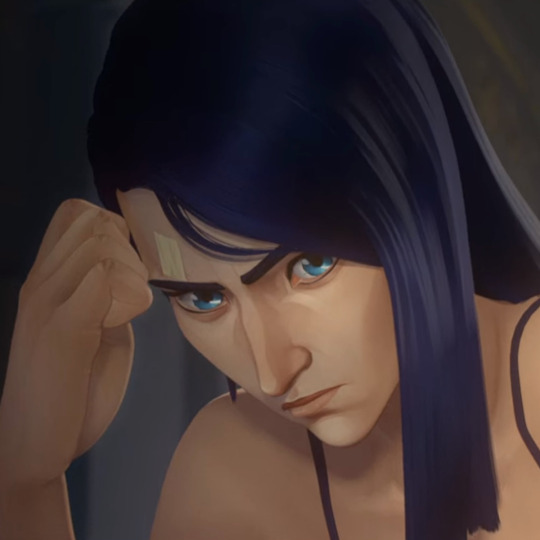
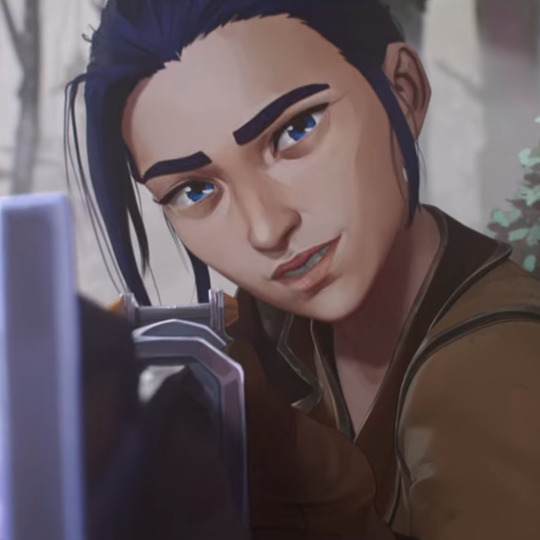

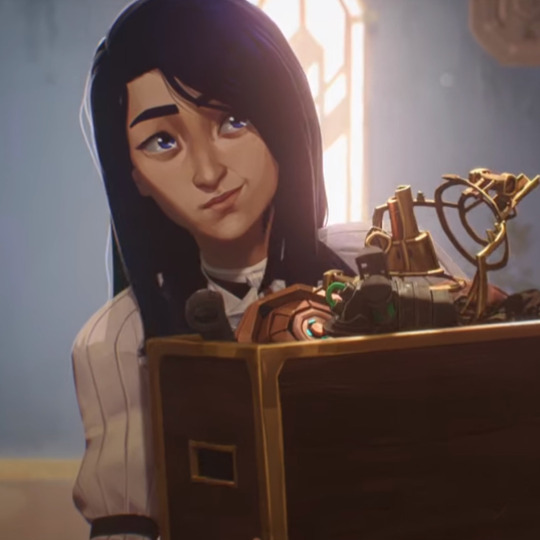




- ', arcane ┈ caitlyn icons ꒱
#caitlyn#caitlyn lq icons#caitlyn low quality icons#caitlyn icons#caitlyn league of legends#caitlyn arcane#caitlyn kiramman#caitlyn kiramman icons#caitlyn kiramman lq icons#caitlyn kiramman low quality icons#caitlyn kiramman league of legends#caitlyn kiramman arcane#arcane#arcane icons#arcane lq icons#arcane low quality icons#arcane pfp#league of legends
102 notes
·
View notes
Text
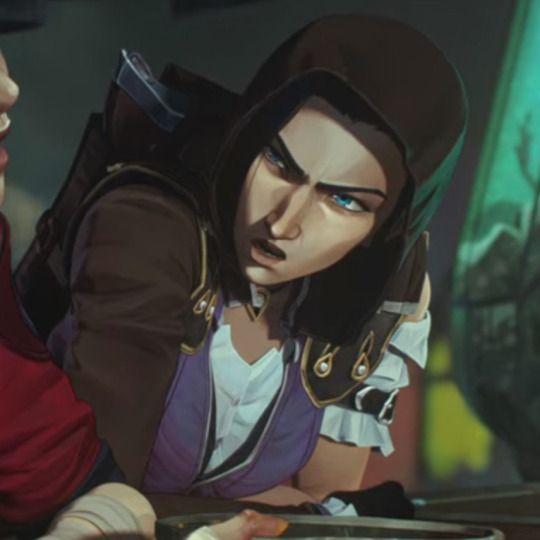




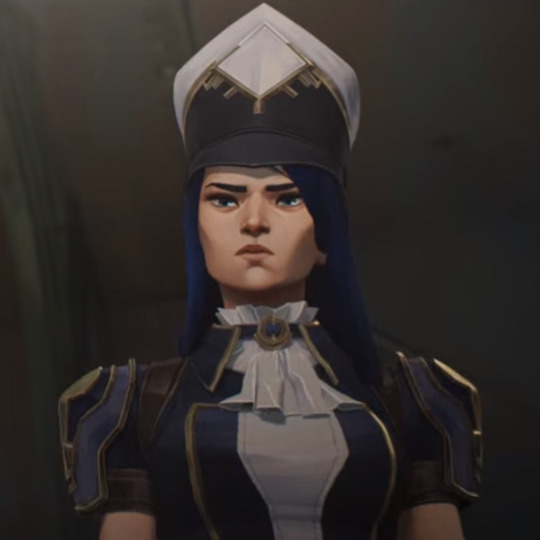

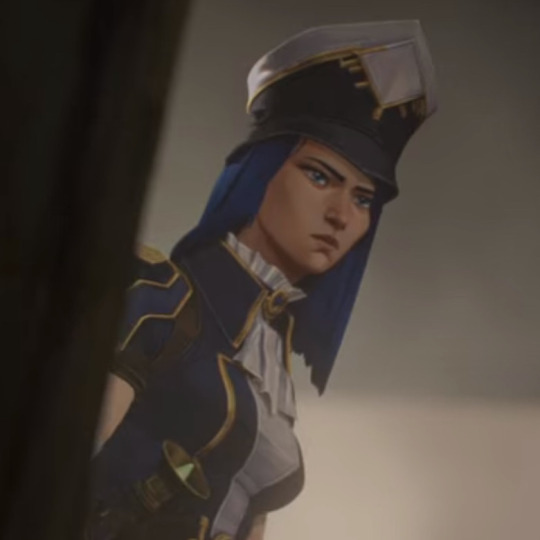

- ', arcane ┈ caitlyn icons ꒱
#caitlyn#caitlyn icons#caitlyn lq icons#caitlyn low quality icons#caitlyn league of legends#caitlyn arcane#caitlyn kiramman#caitlyn kiramman icons#caitlyn kiramman lq icons#caitlyn kiramman low quality icons#caitlyn kiramman league of legends#caitlyn kiramman arcane#arcane#arcane icons#arcane lq icons#arcane low quality icons#arcane pfp#league of legends
97 notes
·
View notes
Text


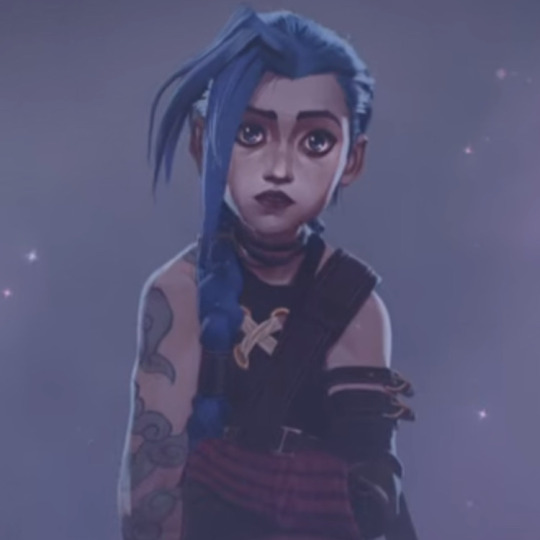



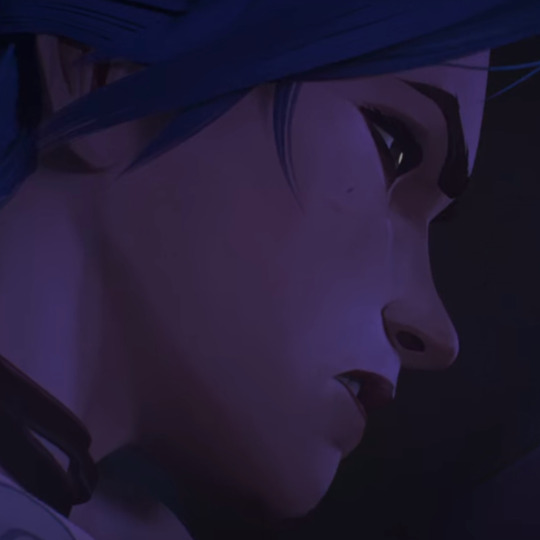
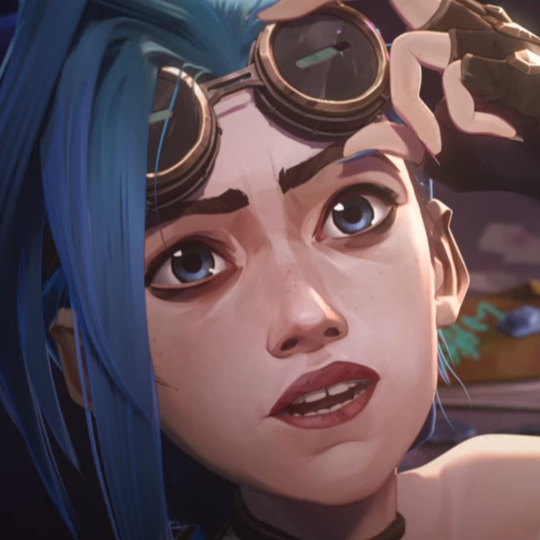

- ', arcane ┈ jinx icons ꒱
#jinx#jinx icons#jinx lq icons#jinx low quality icons#jinx arcane#jinx league of legends#powder#powder icons#powder lq icons#powder low quality icons#powder arcane#powder league of legends#arcane#arcane icons#arcane lq icons#arcane low quality icons#arcane pfp#league of legends
78 notes
·
View notes
Text


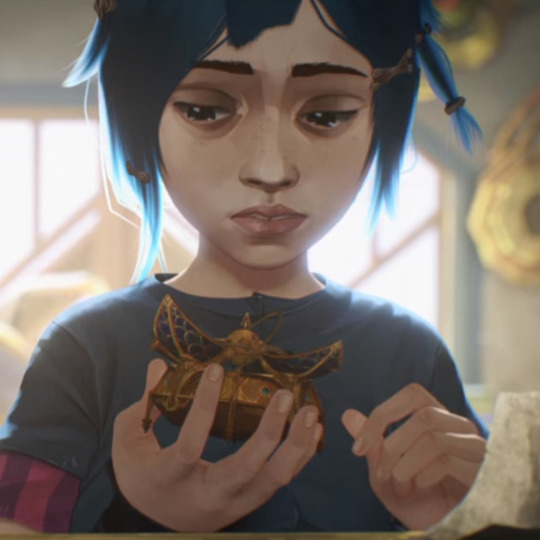





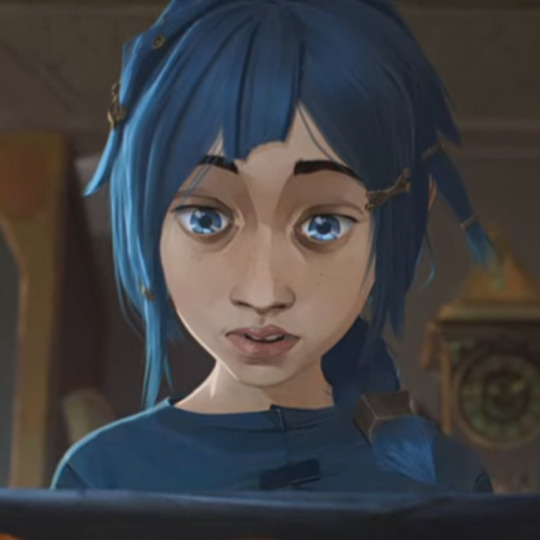
- ', arcane ┈ powder icons ꒱
#powder#powder icons#powder lq icons#poder low quality icons#powder arcane#powder league of legends#arcane#arcane icons#arcane lq icons#arcane low quality icons#arcane pfp
35 notes
·
View notes
Text
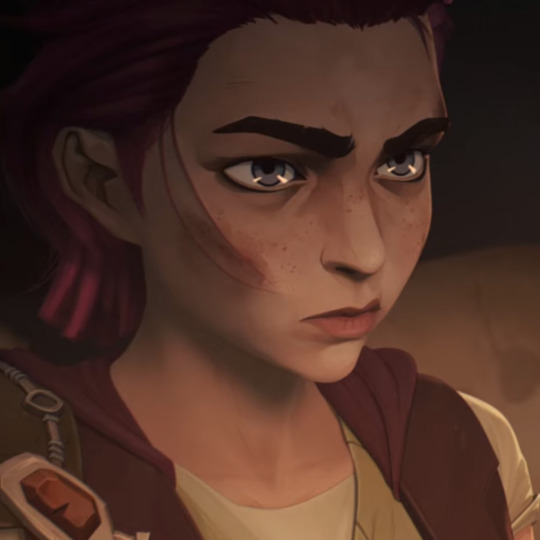
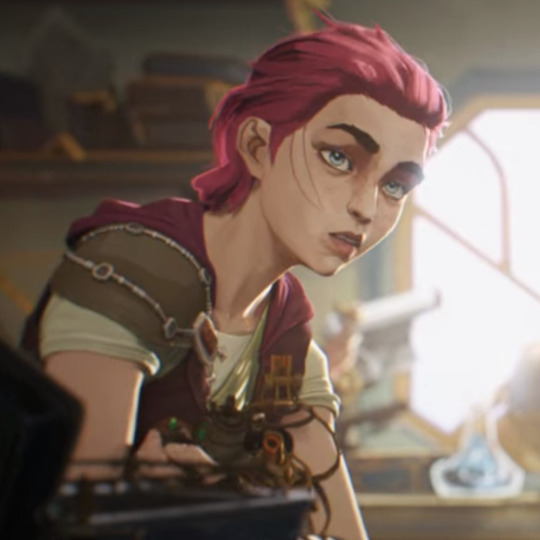




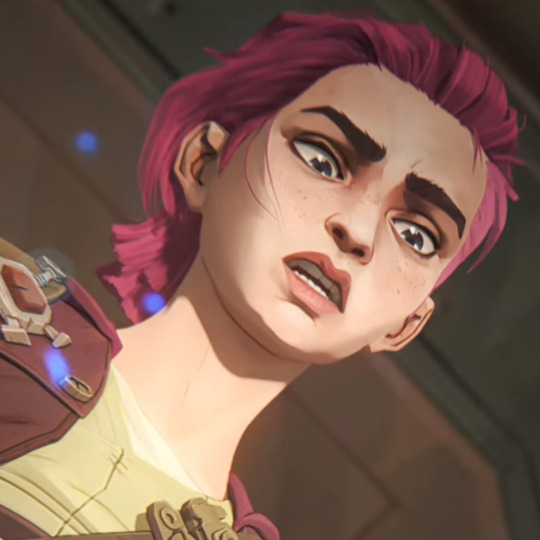


- ', arcane ┈ vi icons ꒱
#vi#vi icons#vi lq icons#vi low quality icons#vi league of legends#vi arcane#violet#violet icons#violet lq icons#violet low quality icons#violet league of legends#violet arcane#arcane#arcane icons#arcane lq icons#arcane low quality icons#arcane pfp
24 notes
·
View notes
Text
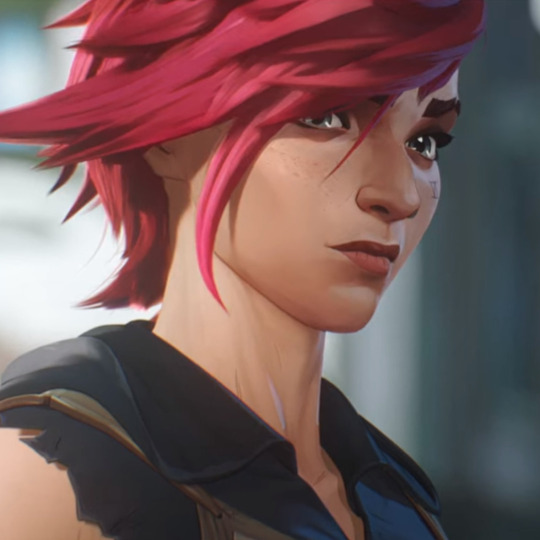








- ', arcane ┈ vi icons ꒱
#vi#vi icons#vi lq icons#vi low quality icons#vi league of legends#vi arcane#violet#violet icons#violet lq icons#violet low quality icons#violet league of legends#violet arcane#arcane#arcane icons#arcane lq icons#arcane low quality icons#arcane pfp#league of legends
44 notes
·
View notes